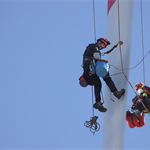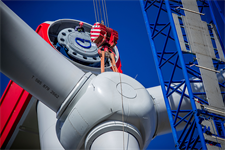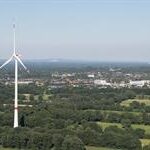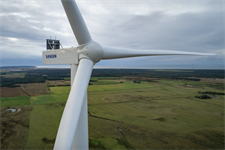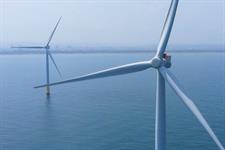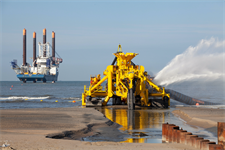WindEurope’s Electric City opens with call for urgent action
Energy Disrupter

The COP26 climate conference, held in the UK earlier this month, may not have reached as decisive an outcome as everyone hoped, but the one thing it did do, according to Andreas Nauen, chair of WindEurope and CEO of Siemens Gamesa Renewable Energy, is show that the “wind industry is now universally regarded as the key pillar of the response to the climate emergency”.
Speaking at the opening session of WindEurope’s three-day “Electric City” conference and exhibition in Copenhagen (23-25 November), Nauen pointed out that direct electrification, complemented by the indirect electrification of hard-to-abate sectors, is the “most cost effective and energy efficient way to deliver climate neutrality”.
Delivering electrification in a sustainable manner will require a significant increase in renewable electricity. According to WindEurope, renewables already account for 38% of the electricity consumed in the EU, but electricity is still only one quarter of the energy consumed. By 2050, the EU commission aims to increase that share to 75%, with 57% being powered directly by electricity and another 18% coming from renewable hydrogen and its derivatives. Wind currently accounts for 16% of Europe’s electricity mix, a figure the EU wants to see reach 50% by 2050.
At present, we are a long way from delivering such ambitious targets. “If we continue installing renewables at the pace we are doing today, we will breach the net zero scenario by 2104”, Javier Rodriguez Diez, executive vice president and chief sales officer at Vestas, pointed out.
Ensuring that is not the case will require the kind of innovation that has fuelled rapid advances in the wind industry, as well as simple and predictable permitting processes and a long-term outlook that focuses on developing a solid, profitable and sustainable supply chain.
“We need to expand the narrative around the wind business,” he said. “We will have to shift the focus to all the value that we generate for society.”
Thomas Brostrøm, senior vice president for global renewable solutions at oil and gas giant Royal Dutch Shell, added that there were significant challenges around scaling the industry, such as an increasingly crowded seascape, ensuring decommissioned blades do not end up in landfill and, crucially, improving safety. Last year in the European offshore wind industry alone, he said, there were three to four serious injuries – three times that seen in oil and gas, he said.






